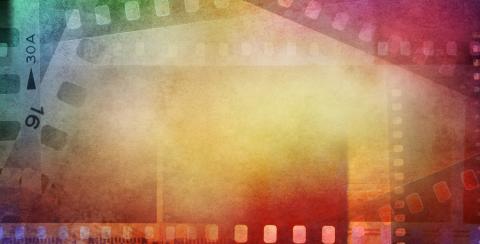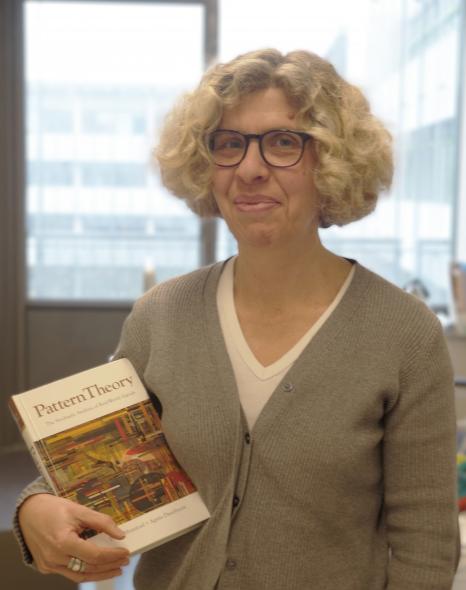
Agnès Desolneux: turning images into equations
Agnès Desolneux is a mathematician, Director of Research at CNRS and guest lecturer at the Centre Borelli (Univ. Paris-Saclay, CNRS, ENS Paris-Saclay, Univ. Paris Cité, the Defence Health Service, Inserm). This research laboratory is the result of merging teams of researchers from different backgrounds at the start of 2020 and brings together several disciplines, including applied mathematics – the field in which Agnès Desolneux works. The researcher is a specialist in image modelling for different application purposes.
Agnès Desolneux’s mother was a mathematician and professor at Lyon, so she took an interest in the discipline from an early age. She studied for the 2-year preparatory course for the competitive exam in Paris, then passed this exam at ENS Paris before going on to achieve a distinguished track record, including a Degree, Master’s, DEA (Advanced Studies Diploma) and an ‘agrégation’ (teaching qualification). The young student believed that her two passions of mathematics and film would never be able to come together. However, over the course of her studies at ENS, she found out that this was not true. “Tutors at the school directed me to an image research centre at Université Paris Dauphine. I thought it was absolutely brilliant!”
Combining mathematics and film
Agnès Desolneux began a thesis on the statistical analysis of detections in images, supervised by Jean-Michel Morel. She defended it in the year 2000 at the Centre for Mathematics and its Applications (CMLA) at ENS Cachan (ENS Paris-Saclay today). The PhD student got to know the American researcher, David Mumford (winner of the Fields Medal in 1974) during a term at the Institut Henri Poincaré. “Although he focused on pure mathematics at the beginning of his career, I was lucky enough to meet him when he became interested in image modelling.” The mathematician made her his teaching assistant and offered to write a book based on her notes. After several trips back and forth between France and the United States, the book was published in 2010.
In the meantime, the researcher was taken on by CNRS in 2001 as a research associate in the mathematics laboratory at Université Paris-Descartes. She stayed there for ten years before returning to the CMLA in 2011 following her appointment as Director of Research at CNRS.
From medical imaging to video games
Mathematical models are used to test the behaviour of the objects under study at the point where probability and the physics of imaging systems intersect. “I think of images as mathematical objects. Based on this, I ask myself questions such as how can poor quality images be fixed? How can we detect in images or generate new ones for various applications?” explains Agnès Desolneux. She also creates computer-generated images for virtual clinical trials. “For example, we simulate lesions or calcifications on the images. We then see if it’s possible to detect them and if so, at what size.”
Medical imaging holds a special place among the possible applications of this work. “Using mammograms, we model the detectability of structures. We try to show what is detectable and what is not,” explains the mathematician, who is collaborating with GE Healthcare in this area.
Other more fun applications exist, such as improving images in video games and animated films, which are demanding ever greater realism. At the other end of the scale, there is also image restoration, which involves the removal of signs of chemical deterioration from rolls of old films. “My work strikes a balance between realism and simplicity, modelling physical phenomenon (that of alteration, the ‘noise’ of deterioration) – which must be as realistic as possible – and the search for usable mathematical models.”
Identifying the composition of very old materials
The mathematician is now working with the ‘Domaine d’intérêt majeur’ (Major area of interest) or DIM Material heritage - innovation, experimentation and resilience (PAMIR). This research network based in Ile-de-France is led by researcher Loïc Bertrand from the Supramolecular and Macromolecular Photophysics and Photochemistry Laboratory (PPSM – Univ. Paris-Saclay, CNRS, ENS Paris-Saclay). The research being carried out is part of the development of the ‘data, modelling and statistics’ aspect of the analysis of ancient heritage materials. “Using spectral images of materials obtained from the SOLEIL synchrotron’s electron and energy flux, we model the physical phenomenon in order to analyse, for example, the chemical composition of the materials,” explains Agnès Desolneux.
The researcher is also a member of the Network of Mathematics of Imaging and its Applications (GdR MIA) which brings together the entire scientific community involved in mathematics and imaging.
Mathematics at Université Paris-Saclay
In her role as a guest lecturer at ENS Paris-Saclay, Agnès Desolneux teaches in the Department of Mathematics Teaching and Research, where she is also the Deputy Director. “Although few in number, ENS students are very interested and make the perfect audience.” The mathematician actively encourages them to continue with their training during their PhD work. “Learning through research is always useful. Academic attainment is not a goal in itself at ENS Paris-Saclay. Students sometimes have preconceived ideas about research when they join the School, but the majority get into it.”
Agnès Desolneux is also Deputy Director of the Hadamard Doctoral School of Mathematics (EDMH). In particular, she is responsible for ENS Paris-Saclay. “The bringing together of all mathematics at Université de Paris-Saclay represents a real change.” She is also on the board of the Université Paris-Saclay Mathematics Graduate School. “It’s natural for me to get involved with students and to support them in their search for PhD funding. I also find it natural to attend meetings where I can meet other researchers and understand their vision and way of working. It gives me the chance to appreciate the variety of mathematics available at Université Paris-Saclay. All these collaborative activities benefit the whole community.”

